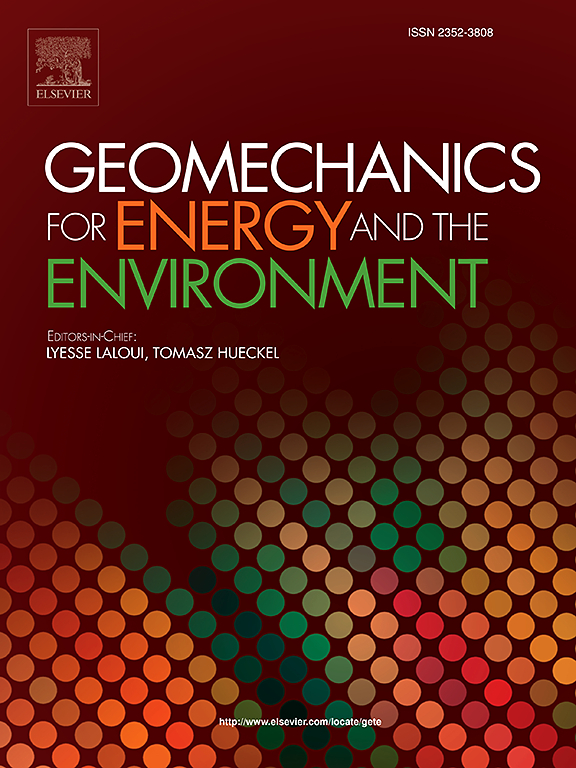A thermodynamically consistent model of strain coupling in expansive soils
IF 3.3
2区 工程技术
Q3 ENERGY & FUELS
引用次数: 0
Abstract
This work examines the thermodynamic consistency of the relationship between the strains caused by the rearrangement of the microstructure in an expansive soil and the coupled plastic strains caused by the resulting rearrangement of the macrostructure (strain coupling). Assuming a multi-dissipative process, it is found that, for the energy variation associated with the mass exchange between macro- and microstructure to be consistent with the macroscopic strain dissipation, the strain coupling is determined by the macro- and microstructural constitutive relations, without the need to introduce new and additional external functions to define the coupling. This results in a robust definition of the coupling function under isotropic conditions, with a structure independent of the adopted constitutive models, which consequently does not have to be adjusted heuristically depending on the type of material, the test or whether microstructural swelling or shrinkage occurs.
膨胀土应变耦合的热力学一致模型
本文研究了膨胀土中微观结构重排引起的应变与宏观结构重排引起的耦合塑性应变(应变耦合)之间的热力学一致性关系。假设是一个多耗散过程,为了使与宏观和微观结构之间的质量交换相关的能量变化与宏观应变耗散一致,应变耦合由宏观和微观结构的本构关系决定,而不需要引入新的和额外的外部函数来定义耦合。这导致了在各向同性条件下耦合函数的鲁棒定义,其结构独立于所采用的本构模型,因此不需要根据材料类型、测试或微观结构是否发生膨胀或收缩进行启式调整。
本文章由计算机程序翻译,如有差异,请以英文原文为准。
求助全文
约1分钟内获得全文
求助全文
来源期刊

Geomechanics for Energy and the Environment
Earth and Planetary Sciences-Geotechnical Engineering and Engineering Geology
CiteScore
5.90
自引率
11.80%
发文量
87
期刊介绍:
The aim of the Journal is to publish research results of the highest quality and of lasting importance on the subject of geomechanics, with the focus on applications to geological energy production and storage, and the interaction of soils and rocks with the natural and engineered environment. Special attention is given to concepts and developments of new energy geotechnologies that comprise intrinsic mechanisms protecting the environment against a potential engineering induced damage, hence warranting sustainable usage of energy resources.
The scope of the journal is broad, including fundamental concepts in geomechanics and mechanics of porous media, the experiments and analysis of novel phenomena and applications. Of special interest are issues resulting from coupling of particular physics, chemistry and biology of external forcings, as well as of pore fluid/gas and minerals to the solid mechanics of the medium skeleton and pore fluid mechanics. The multi-scale and inter-scale interactions between the phenomena and the behavior representations are also of particular interest. Contributions to general theoretical approach to these issues, but of potential reference to geomechanics in its context of energy and the environment are also most welcome.
 求助内容:
求助内容: 应助结果提醒方式:
应助结果提醒方式:


